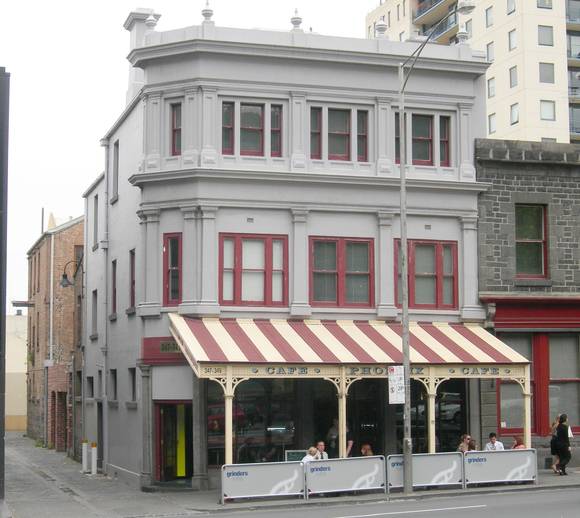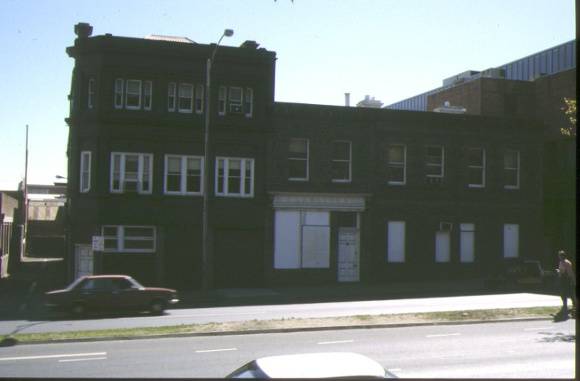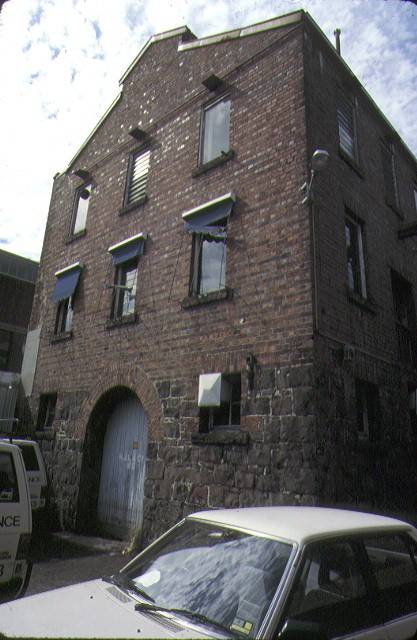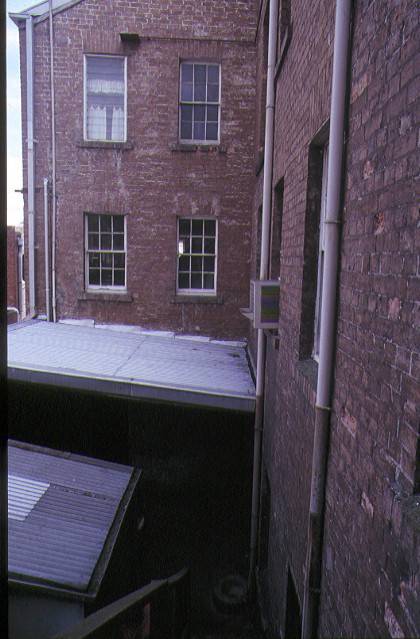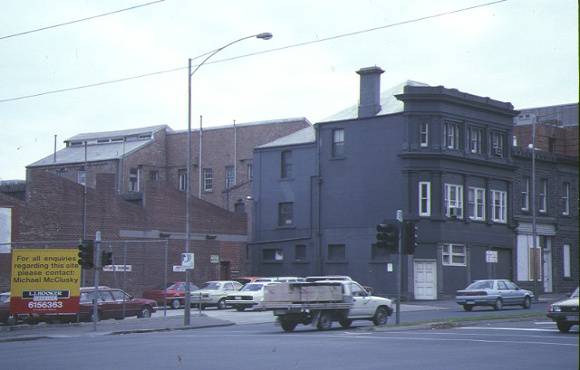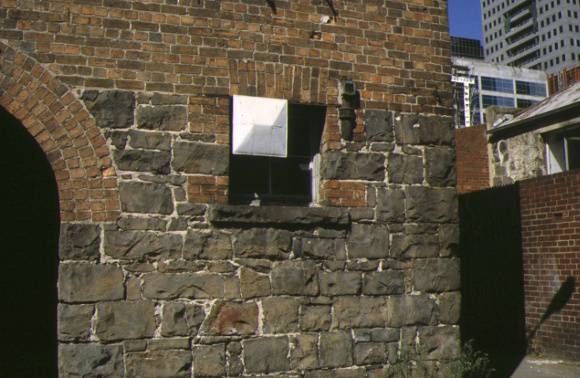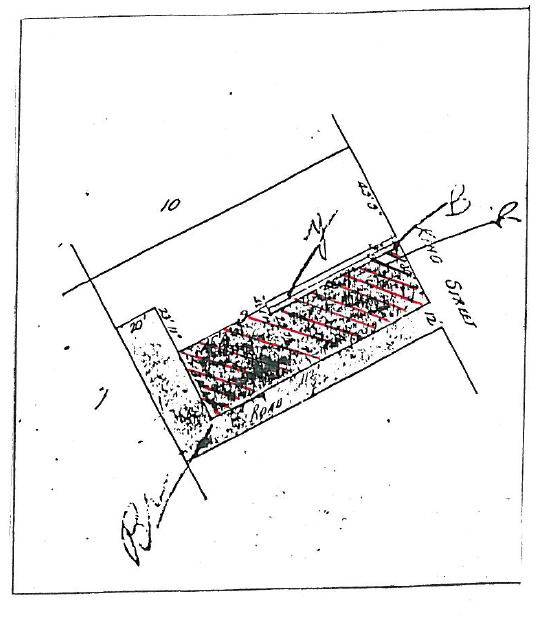| Back to search results » | Back to search page » |
|
FORMER PHOENIX CLOTHING COMPANY
Location347-349 KING STREET AND 4-8 PHOENIX LANE WEST MELBOURNE, MELBOURNE CITY
File Number604782 [parts 1-4]LevelRegistered |
|
Statement of Significance
What is significant?
The Former Phoenix Clothing Company building is a three storey stone and brick shop, residence and store complex. It contains fabric from several different periods of building and alteration. The earliest section dates from the early goldrush era, while three storey additions were made in 1859 and the ground floor of the rear store/factory section probably dates from the 1860s. An 1869 photograph of the building showed a loggia, but this has been filled with windows.
How is it significant?
The Former Phoenix Clothing Company building is of historical and architectural significance to the State of Victoria.
Why is it significant?
The Former Phoenix Clothing Company building is of historical significance as one of the oldest examples of a commercial building and factory in the State. Its King Street facade contains rare goldrush-era elements, from a time when King Street was an unmade although busy road with bullock drays and other carriers' wagons, loaded with goods, continually passing on their way to Bendigo and the other diggings. The factory proper dates from the 1860s and provides important evidence of the character of early industrial organisation in Melbourne. The Phoenix Clothing Company was established in the wake of post gold rush metropolitan growth and benefited from the introduction of tariff legislation in the 1870s. The Phoenix factory was one of the few mechanised 19th century clothing manufacturers, and has been credited with introducing advanced overseas technology to Victoria. Although there have been many structural changes to the building over the years, the essential design and structure of the complex provide a substantially intact representation of contemporary factory design and working conditions, and of aspects of 19th century building technology.
The Former Phoenix Clothing Company building is of historical significance as evidence of the character of Melbourne's early development. The combination of residence, shop and factory is a reminder of a time when the city was much more compact, and residence and workplace were often located in the same building or very nearby. The building also demonstrates the long-term continuity of industrial usage in this part of Melbourne.
The Former Phoenix Clothing Company building is of historical significance for its associations with the notable Fenwick Brothers, and Albion T. Walkley. The Fenwick Brothers were London clothing manufacturers and importers, who owned the site from the 1850s and established the Phoenix Clothing Company there in the 1870s. Orlando Fenwick (1822-1897) who once lived on the premises, was a prominent Victorian clothing manufacturer and importer. He also took a leading role in Melbourne harbour development schemes and was a Melbourne City councillor over a long period and Mayor of the city. Walkley, the factory manager from 1875 and owner of the manufacturing section of the business from 1878, was responsible for introducing into the Victorian clothing trade the innovative mechanical knife system of cutting which revolutionised the industry in the pre-WW1 period.
The Former Phoenix Clothing Company building is of architectural significance because of its first floor loggia, perhaps the earliest example in Melbourne (although it has subsequently been built in, it is restorable) and as part of a coherent mid-19th century commercial streetscape which gives some idea of the architectural character of this part of Melbourne in the post-gold rush period.
Group
Manufacturing and Processing
Category
Factory/ Plant


